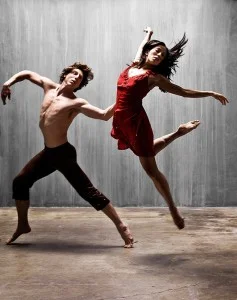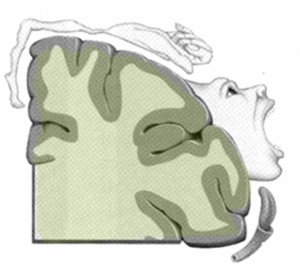 One of the many reasons I like studying the brain is that its function is so directly tied to all the actions I do every day. As I go through the world it’s easy to forget that my brain is working hard coordinating my muscles and senses, so I like little demonstrative exercises using ones own body (cases of “embodied learning”, as the educational field would call them) that can remind me of and illustrate aspects of how the brain controls all those actions that are so easy to never give a second thought.
One of the many reasons I like studying the brain is that its function is so directly tied to all the actions I do every day. As I go through the world it’s easy to forget that my brain is working hard coordinating my muscles and senses, so I like little demonstrative exercises using ones own body (cases of “embodied learning”, as the educational field would call them) that can remind me of and illustrate aspects of how the brain controls all those actions that are so easy to never give a second thought.
Here I present two of my favorites, both on how one’s motor system functions. The first demonstrates, through a failure, that the brain has specific areas dedicated to the control of the muscles in specific body parts, and the second illustrates how “muscle memory” isn’t necessarily memory for how to move specific muscles, but rather memory for a general pattern of movements.
The motor system in humans is an amazingly complex system, with several different layers of control and reflexes, but when it comes to the specific, voluntary, control of one’s muscles the primary motor cortex reigns supreme. This area of the brain is a long strip of tissue that can be divided by what parts of the body their neuronal projects control. The mini map of the human body that can be overlaid onto this area is called a “motor homunculus”.
While this map makes it appear that all the body parts are separate, sometimes distinction between the areas that control different body parts isn’t perfect, which leads to my first exercise:
- Extend the fingers on your non-dominate hand.
- Try to fold down just your little finger.
- Extend your fingers again.
- Use your other hand to fold down just your little finger.
Chances are your ring finger, and maybe even middle finger, also folded down when you tried to bend your little finger with your mind, no matter how hard you tried to keep them straight, but not when you did it manually with your other hand. Since bending it manually shows that there are no inherent connections that pull down your other fingers when the little finger is bent, why do the other fingers bend when the little finger bends? The answer is, of course, the imperfections in the distinction between your fingers in your motor cortex.
The area that controls your little finger isn’t completely distinct from the areas that control the other fingers, so when you try to exert control on just the little finger there is some spill over effect to the other fingers. This doesn’t have to be the case, if you are a musician of some sort, like a pianist, you need to use each finger independently, and can probably bend your little finger without bending the others. But for the rest of us, the brain is a little lazy, it generally doesn’t need to move just the little finger, so it doesn’t bother to strongly differentiate the control of that finger from its neighbors. You can see this, in part, by bending the fingers on your dominate hand. Its likely that the bend of the other fingers is less pronounced on this hand (for me, I can’t stop my ring finger from moving on my left hand, but I can keep it straight on my right). Your dominate hand needs to perform more complex actions, so there is more distinction between the control of the separate fingers.
The second exercise tackles part of what is often called “muscle memory”. Now, there are a number of different systems involved with learning, storage, and execution of different types of motor actions, and I’m not going to try to describe them all. The point of this exercise is to show that some muscle memories aren’t exactly memories for how to move set muscles.
There are areas of the brain, most notably the premotor cortex, that are involved with the execution of patterns of movements. The premotor cortex sits next to the previously mentioned primary cortex and helps direct and coordinate the signals that are sent by primary motor cortex to ones muscles. Often the pattern of movements needed to perform a task only can be executed by one set of muscles, but some times totally different muscles can be used to perform the same action pattern, as exemplified by this exercise:
- Write your signature on a piece of paper, pay attention to what muscles move to do this.
- Write your signature on something larger, like a white board, and note what muscles move to do this.
Your signature will be nearly identical, other than scale, when written on paper verses on a white board, but you will have noted that when writing on paper you used the small muscles in your wrist and hand, and while you wrote on a white board you used larger muscles in your wrist, elbow, and shoulder. You performed the same action pattern using very different muscles. The memory for writing your signature is for the pattern of action, not just the muscles used. This is a bit of an over simplification of these systems, but you can begin to see the complexities behind actions that we perform every day without thought.
So there are my demonstrations, I hope you enjoyed them, and found them as insightful as I do! Please share any such exercised that you know and find fun!
